Deep Squatting With Perfect Form!
All Mistakes Fixed!
Today I’m going to teach you have to perfect your squat form. A lot of you are having a hard time going ass to grass (ATG), because you’re unsure of how to get proper bar placement with or without the pad on the bar. It’s much more than where you’re placing the bar on your back though, it has a lot to do with foot position as well.
What’s going to determine where your feet should be as you squat has to do with whether you’re high bar or low bar squatting, but also how flexible you are. We’re going to go over a few quick things and after we’re done, each and every one of you is going to be able to go to the gym and have a much better squat.
Squatting With A Pad
This is where most beginners start. First of all, every beginner thinks they need a pad, but you DON’T. I can understand for some of you who are a bit more on the skinny side that you might want to use a pad because you haven’t really built up enough meat on your back to hold the barbell yet, but there will always come a time when you need to get rid of that pad.

These pads have been floating around for a while and they’re much better than a traditional pad, because they have a centre piece where it’s much easier to squish so that you can get the barbell a lot closer to where it should be without it.
What I see with a lot of people when they come into position is they come in and then they actually end up resting the pad more on their neck rather than across their traps, which is mistake number one. As a beginner, you don’t know better and it feels like that’s where the bar should be because of how the pad is shaped. But what ends up happening when the pad is on your neck, is as you go down, you end up pushing the pad into your neck.

So now you have all that weight of the barbell resting on your neck, rather than your back, which is going to throw off your squat, make you lean forward and cause problems in the future.
Bar Placement
What you want to do, is instead of having the bar high, is as soon as you get underneath the bar, you want to pull it down. Once it’s pulled down, that’s actually going to lock the barbell to where it needs to be, on the proper part of your shoulders. It’s only an inch, but it makes a huge difference.
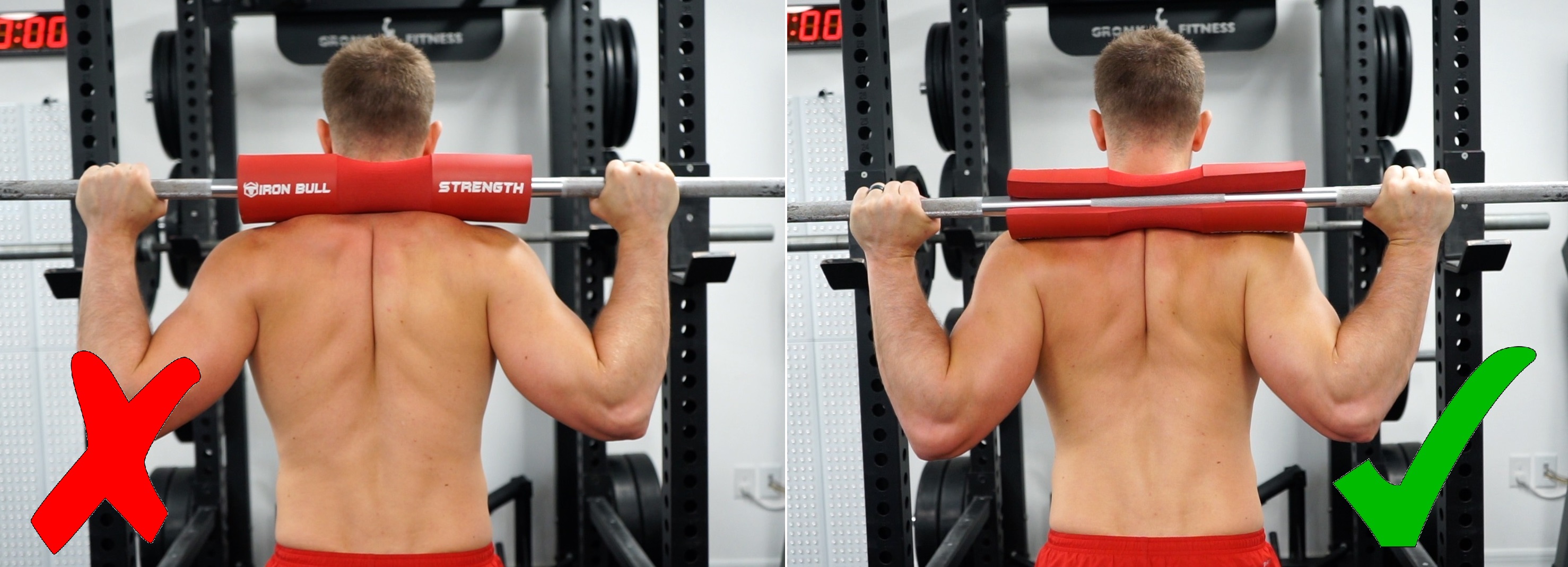
Once you’re pulling it down across your traps, you’re in a much better position to squat and stay upright. Again, if the pad is in your neck, that’s going to push your forward. If you pull back it keeps you upright and now you’re able to squat.
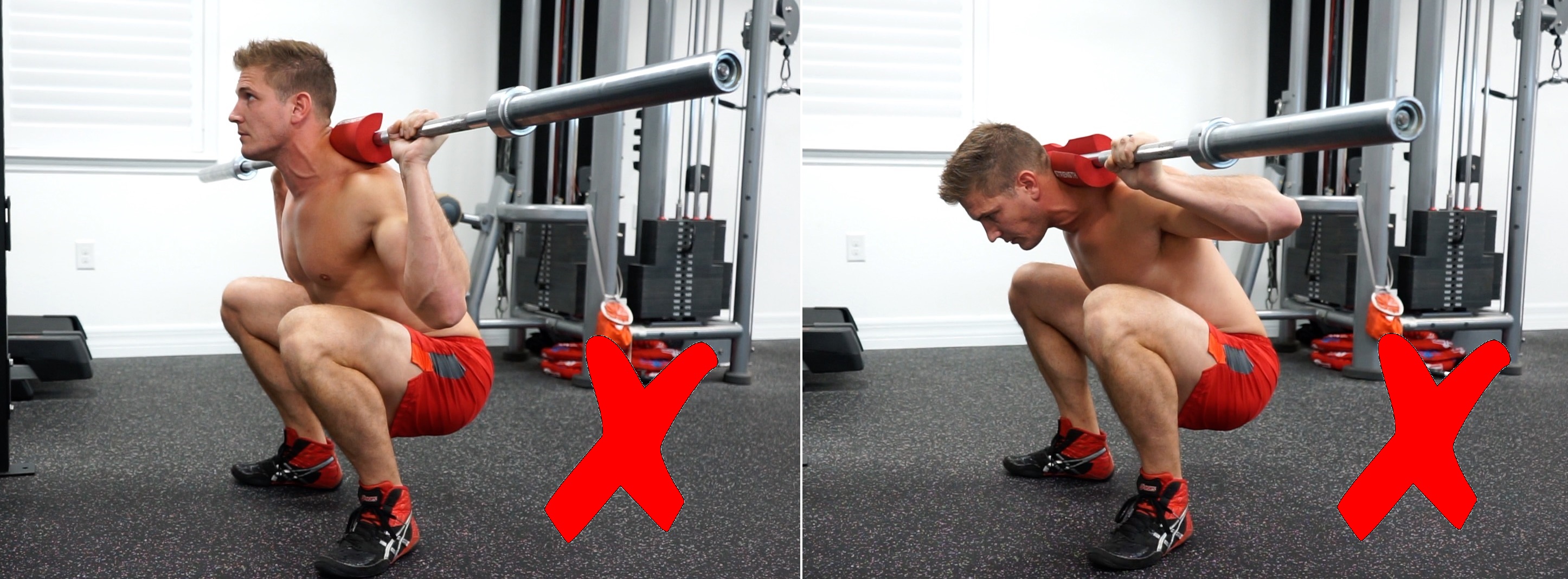
What you want to do is start getting used to not having the bad. My recommendation for those of you who are, let’s say you’re doing four sets, do the first two sets with the pad, the second two sets without the pad, get used to not using it.
High Bar Squatting
For high bar squatting, this is where you want the bar position. Come underneath, get your back in the centre and create a shelf with your traps.
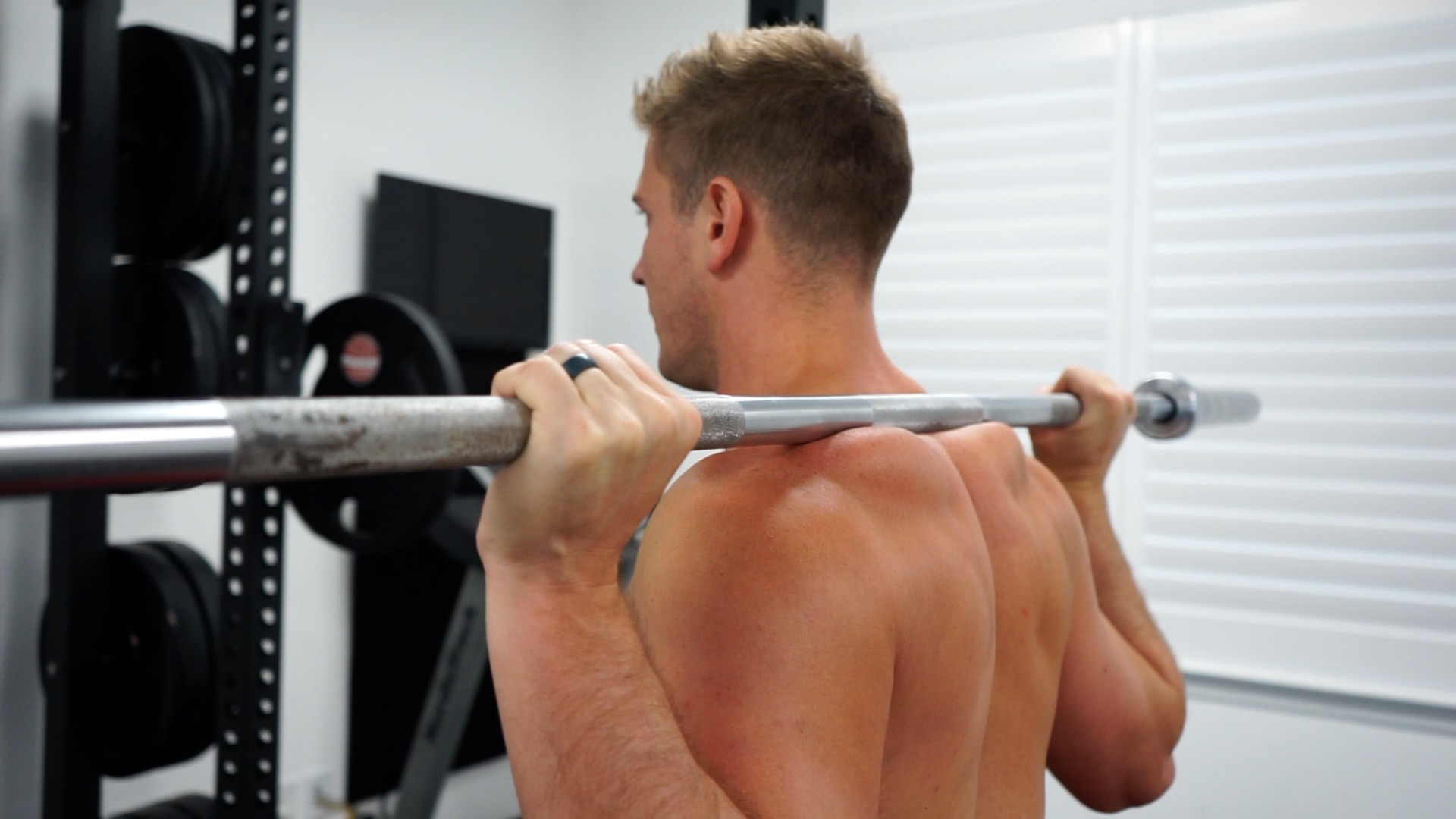
That shelf is going to hold the barbell in position as you go up and down. As that bar stays in position, you should also be making sure that your elbows aren’t flying back either. You don’t necessarily want to swing your elbows forward too much either, but they should be relaxed enough so that when you go down to the bottom, you can move them.
The bar should be resting on your back, not on your hands. If you’re putting too much pressure into your hands, that’s what is causing your elbows to go back and even though the barbell might be going across your back on that shelf, you can still push yourself forward and throw yourself off balance if you push through your hands too much. Make sure your hands are in a position where they can be relatively loose and comfortable.
Foot Position
The last part of the equation is your foot position. What I like to do (especially if you’re in a gym that has a smith machine, that will make it a lot easier to figure this out, but you can do it without a smith machine too), is put my feet where I think they should be when I squat, to be comfortable. Once you find that position, you’re going to squat down and once you’re in the bottom position, if you start to feel uneasy or feel like you’re going to fall over, try going up and down and moving your heels and toes around until that position feels super comfortable, then return back to the starting position.
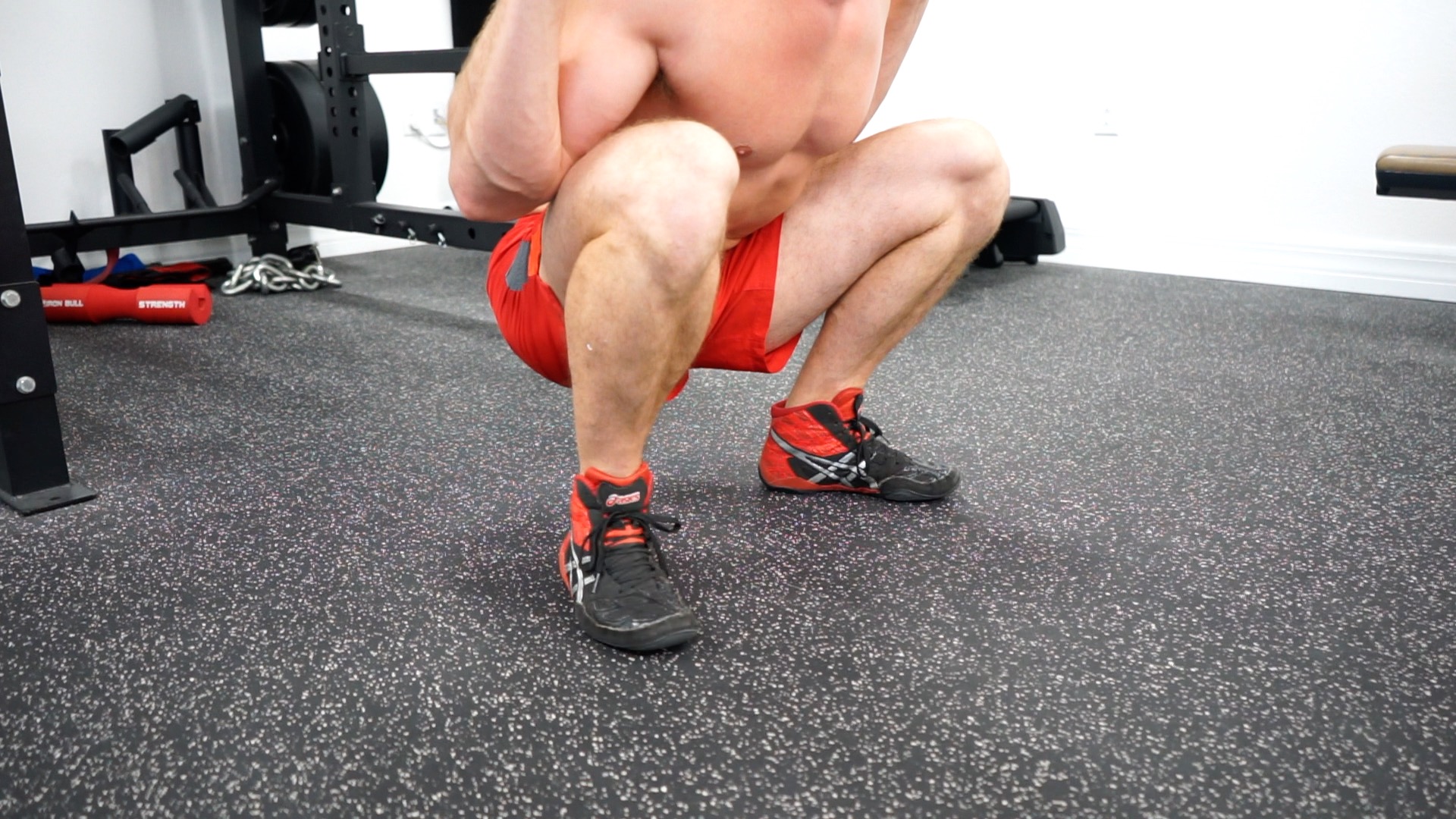
Then look down and memorize that’s where your feet need to be when you squat in order to be comfortable. Then continue to do a set of 12 – 15 repetitions with the light weight to let your body start to remember this. This is how you build up that mind-muscle connection. I also recommend doing a few warm-up sets like this first before you go into your working sets, just so that when you start lifting the heavy weight, your body remembers where it needs to be.
Ankle Flexibility
Another thing that holds a lot of people back is flexibility in the ankles. You’ve now figured out foot position and bar position, but you might still be having a hard time really hitting that depth. So what happens as you go down? Your knees and shins track forward, so basically what happens is you go into dorsiflexion of the ankle. A lot of people can have a hard time with flexibility when it comes to dorsiflexion and if you don’t have much flexibility, then as you go down you will get stuck halfway while bending your knee and that can then force you to go backwards and throw off your squat.
It might be very beneficial for those of you who have a hard time with flexibility to take some time before your workout and even in-between your sets to put your ankles into dorsiflexion to help stretch out that area.
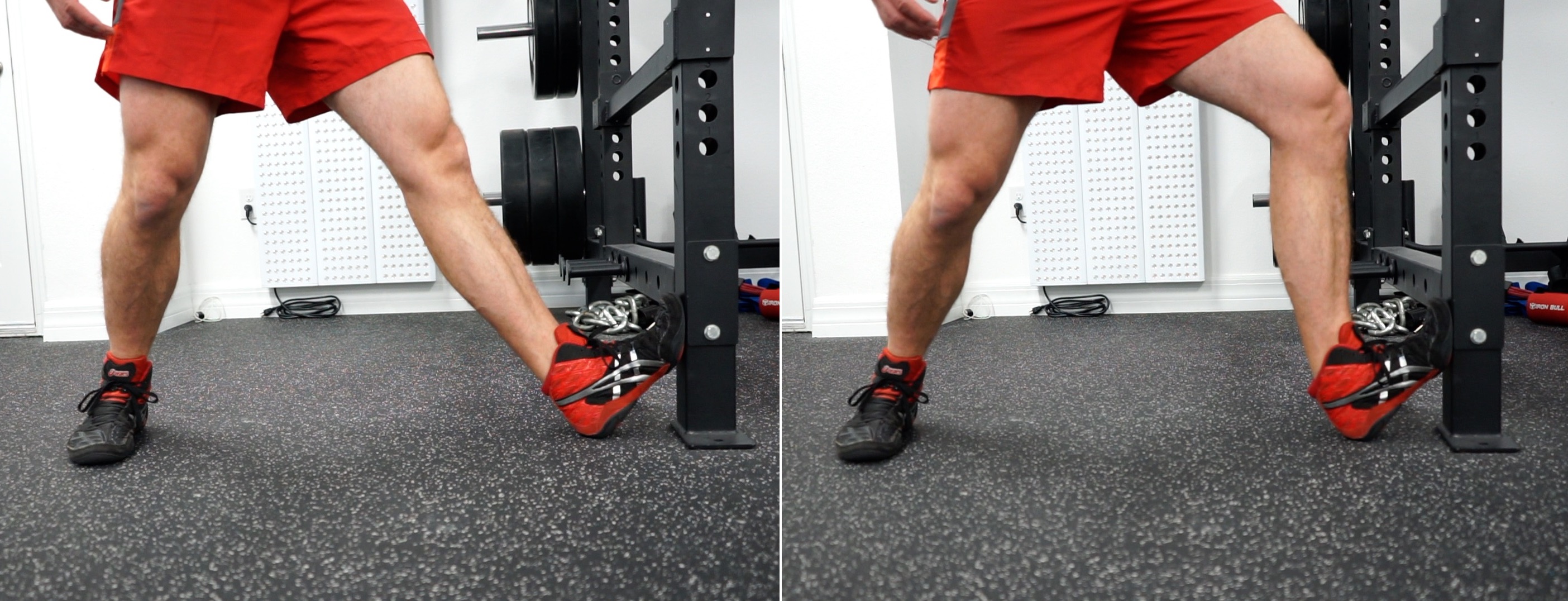
Hold that stretch for 15 – 20 seconds and then even though your flexibility might be really good, still do it the other way as well, holding a plantar flexion stretch for 15 – 20 seconds too.
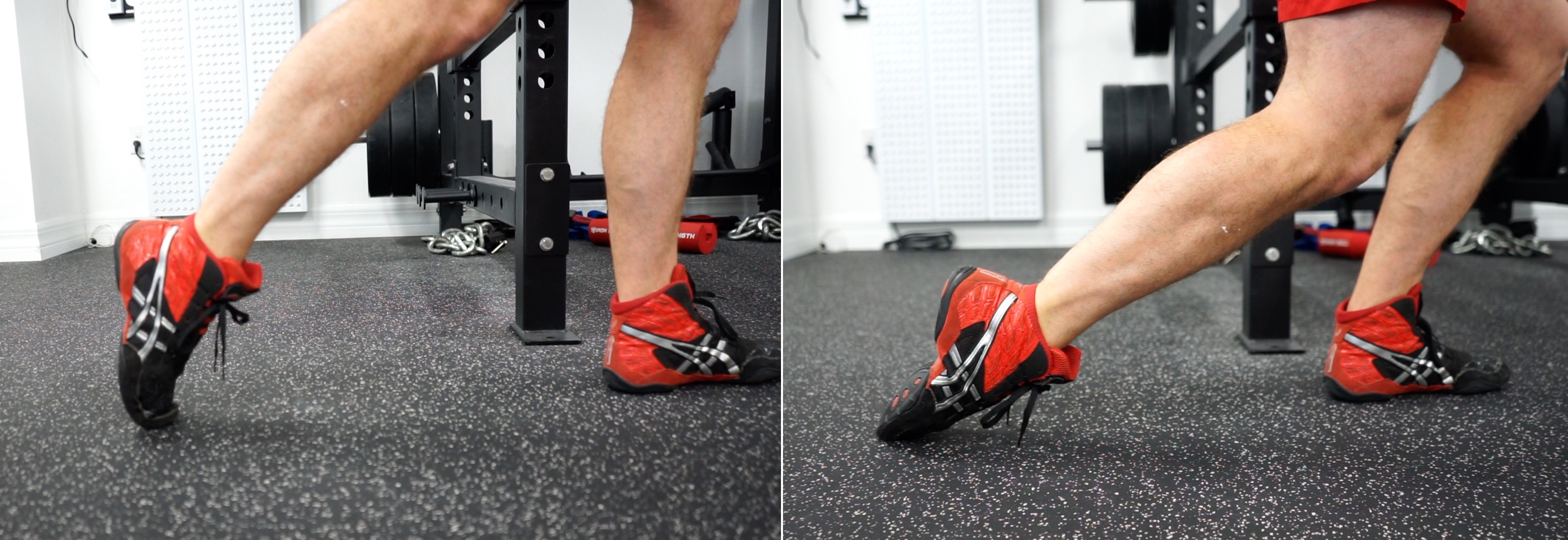
Shoulder Flexibility
The very last thing that might be holding you back during squatting is actually your shoulder flexibility. A lot of people overlook shoulder flexibility, but think about it. When you have the barbell going across your back, your hands are forced way back and if you try to stand up right now and get your hands into the position they would be while holding a bar, there’s no way your hands will be in position to where you could hold a bar across your back. So you’re forcing your hands back further than you can even move them normally without holding onto a barbell.
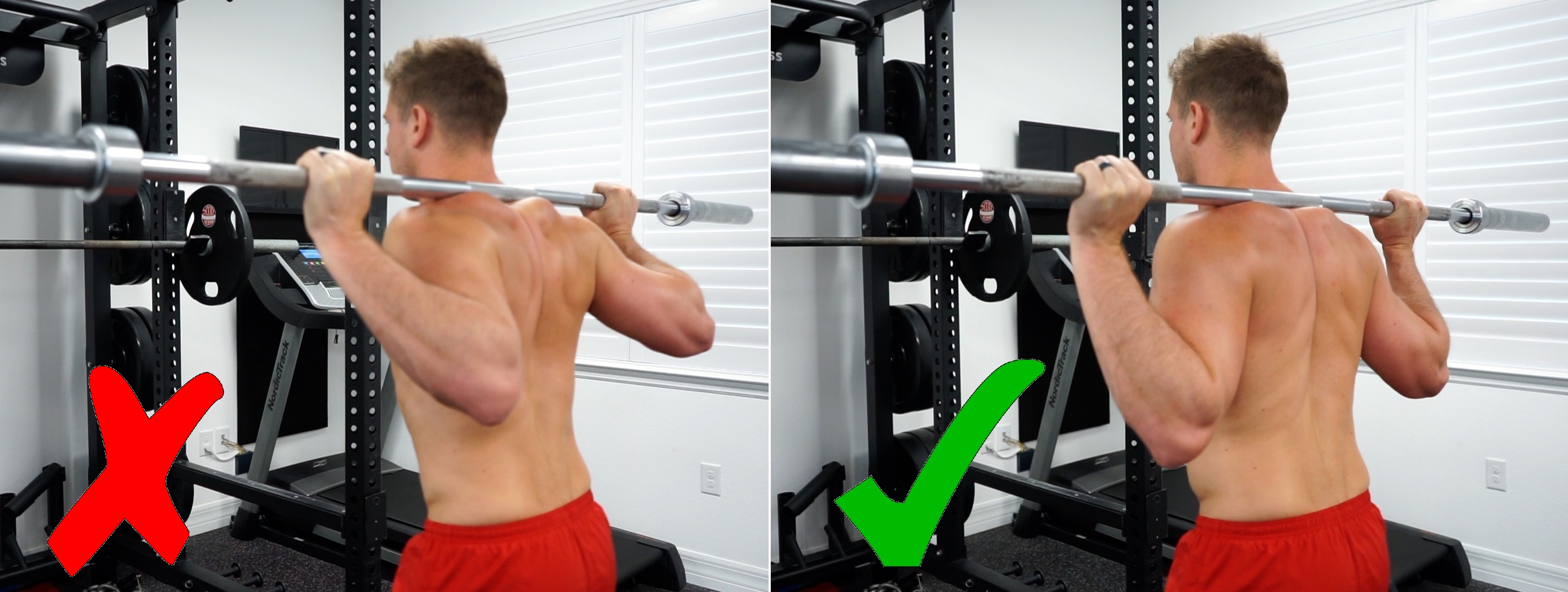
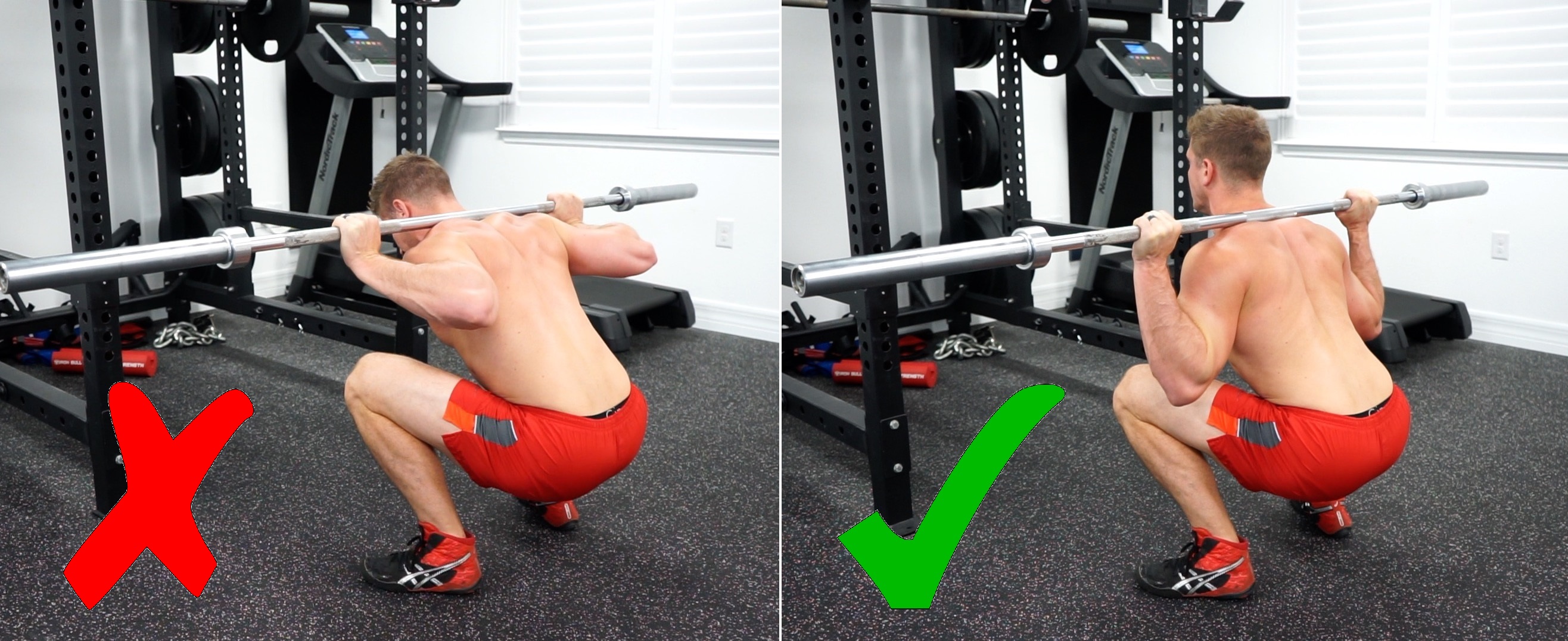
So if you start to get shoulder pain, or if you can’t dip your elbows down, it’s because your shoulders are wicked tight and you need to adjust that. To do so, just grab a band and do a set or two of shoulder breakers (10 – 12 reps per set). I actually have a video that covers a few shoulder mobility exercises, so you can watch that HERE. Some people might need more than just shoulder breakers, but for the average person though, just shoulder breakers alone before and in-between your sets should be enough and it will make you feel like a whole new person.
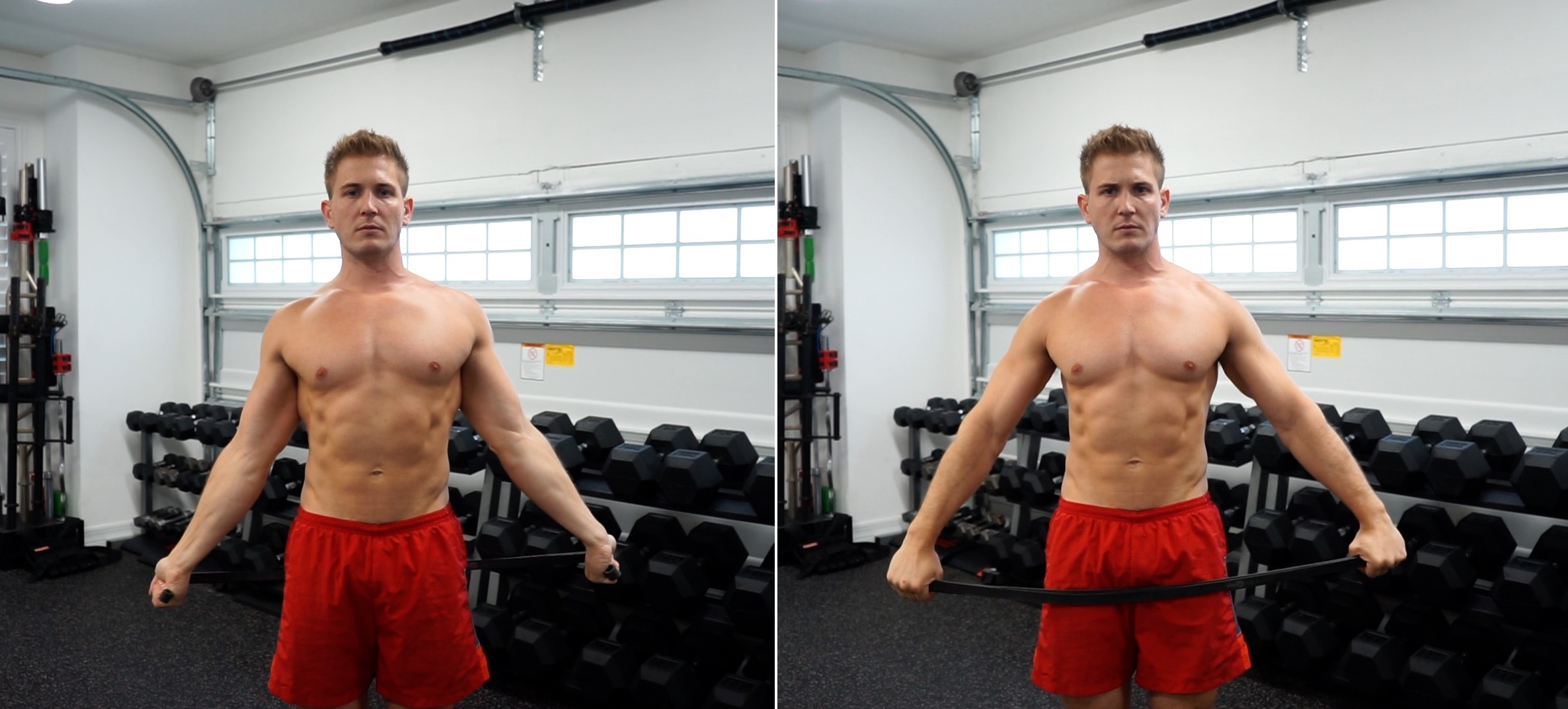
Brace Your Core!
One other quick tip is, after you’ve applied all the tips in this video, you need to make sure that you’re bracing your core as you squat.
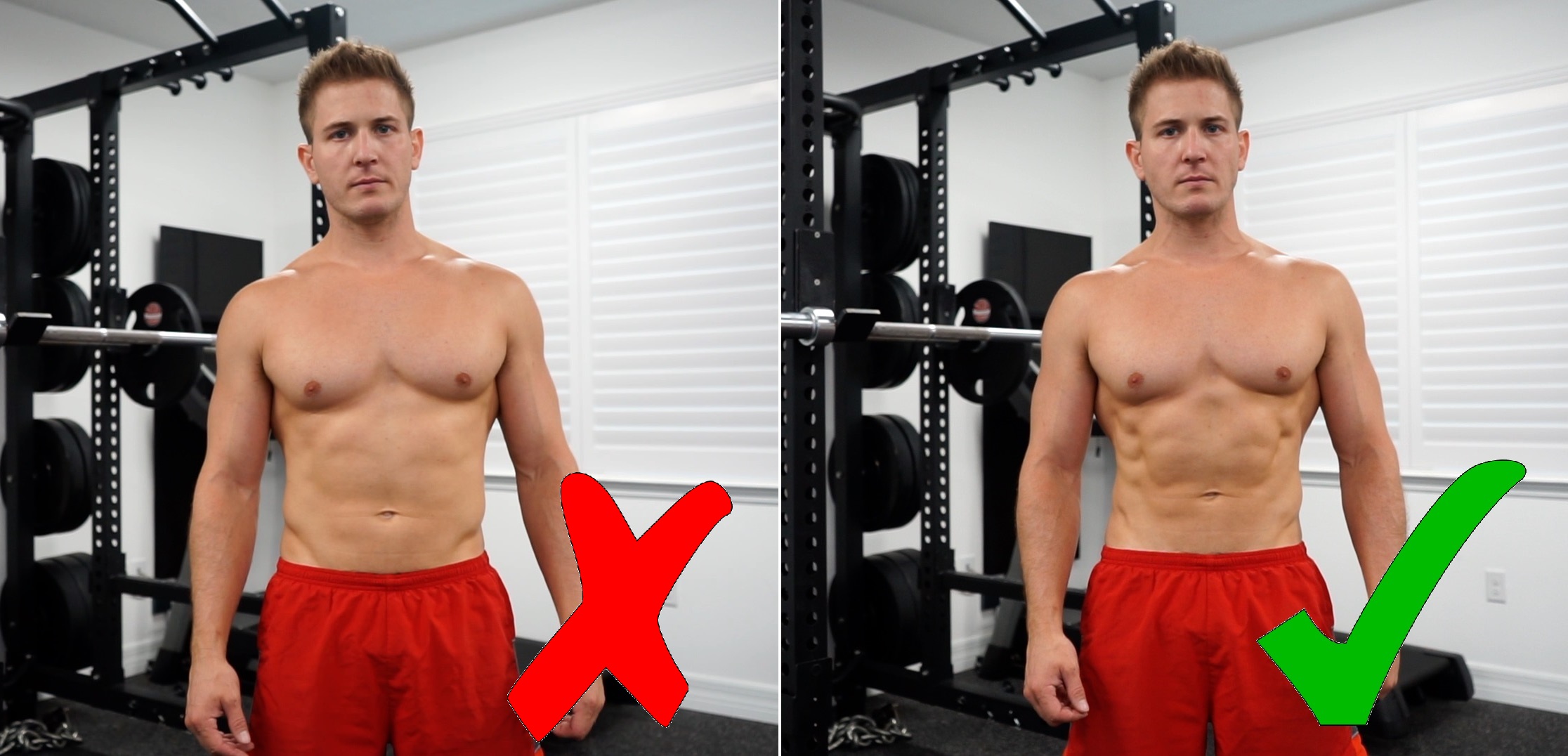
All that means is, as soon as you’re in the top part of the squat in your starting position, breathe in through your nose and then flex and tighten up your core and keep your core tight as you go down and as you go up. Most people fail to squat even if they get everything else correct because they do no brace their core, then what ends up happening is the weight of the barbell causes you to go into spinal flexion and because your core isn’t tight you bend at the waist, which throws off the entire squat.
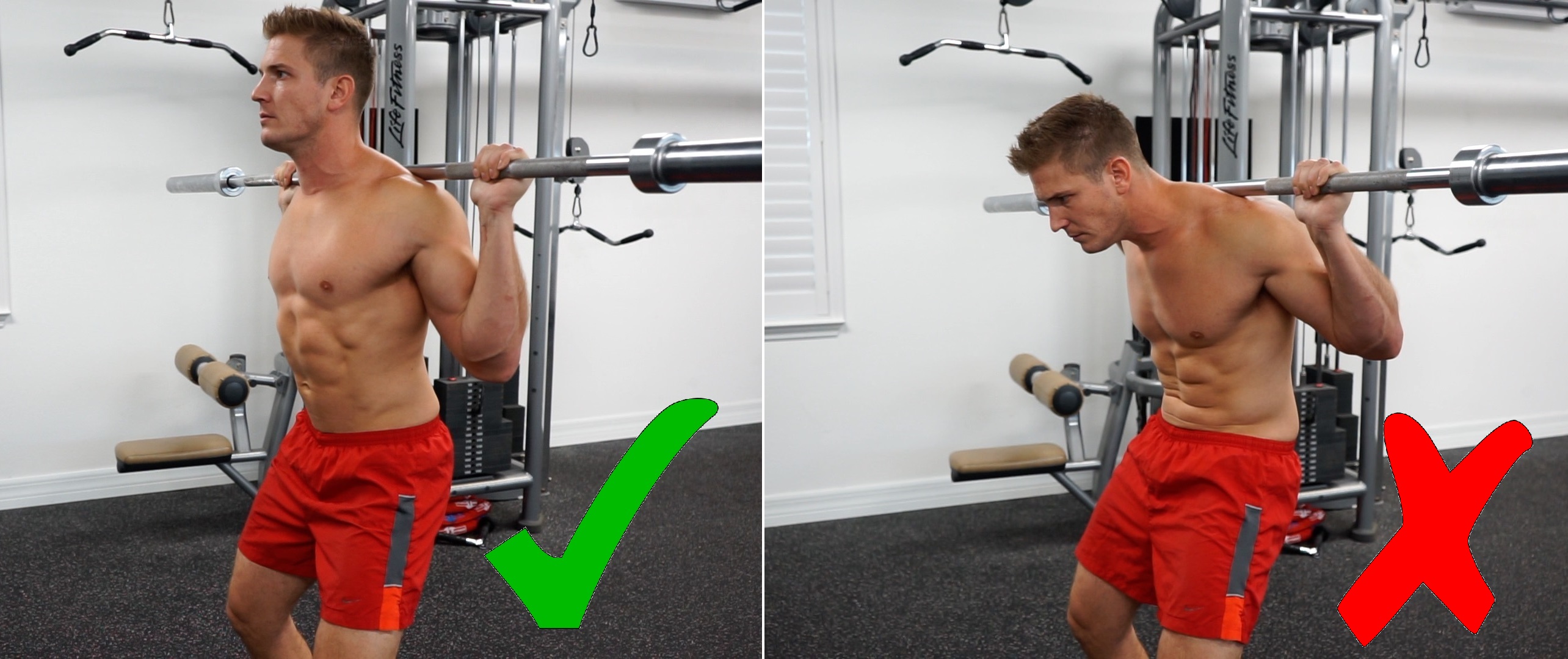
So brace that core!
Low Bar Squatting
The final thing to talk about is foot placement for low bar squatting. Low bar squatting is a little different, for starters it’s probably a little harder to use a pad when low bar squatting simply because of the bar placement. When you low bar squat, instead of having the bar across your traps, you’re actually placing it more across your mid back and rear delts instead, while your hands act as a little bit of a shelf.

Also, because the bar is lower, you’re changing the centre of gravity of where the weight is going to be in relation to your lower body so you’re actually going to bend over a lot more to keep that barbell in line with your hips. For the majority of you, your foot position is also going to be a lot wider than if you were to be high bar squatting.

For me, my foot position is almost double the width compared to if I were high bar squatting, so that even with the different bar placement, I can still sit in-between my legs and go all the way down. But for everything else stays the same while low bar squatting.
Conclusion
I hope this article helped you out and I hope you can now go to the gym and do some insane squatting!








